Sushi has managed to steal the hearts of millions of people globally, who seize every opportunity to savor it. The past two decades have seen a rise in sushi restaurants worldwide, and these have turned out to be some of the most thriving businesses. Packed with protein, sushi is a meal that satiates hunger quickly without leading to weight gain as it doesn’t contain excessive calories. Consequently, it’s often recommended by dietitians as a splendid and nutritious choice when eating out.
The best part about it, however, is that there are so many different tastes and textures that it’s almost impossible for someone—even a very picky person—not to find a taste that excites their palate. In case you’re a big fan of sushi, but your only experience with it is eating it at your favorite restaurant every Saturday night, here follow 25 Delicious Facts About Sushi that will teach you a few things about your favorite exotic dish that you can’t resist.

Feature Image: Pixabay.com
According to the Oxford English Dictionary, the earliest mention of sushi in English can be found in an 1893 book titled Japanese Interiors. However, there are sporadic references to sushi in other English sources dating back to 1873.
 Source: randomhistory.com/sushi-facts.html, Image: Wikipedia
Source: randomhistory.com/sushi-facts.html, Image: Wikipedia Contrary to popular belief, sushi did not originate in Japan, but in the rice-growing region of Southeast Asia over two thousand years ago along the Mekong River. The technique then spread to other areas, eventually appearing in Japan around the eighth century CE.
 Source: randomhistory.com/sushi-facts.html, Image: Wikipedia
Source: randomhistory.com/sushi-facts.html, Image: Wikipedia When sushi was first introduced to Japanese society, it was so highly prized that people were allowed to use it to pay their taxes.
 Source: randomhistory.com/sushi-facts.html, Image: Wikipedia
Source: randomhistory.com/sushi-facts.html, Image: Wikipedia The word “sushi” means “it’s sour,” which reflects back to its origins of being preserved in salt.
 Source: randomhistory.com/sushi-facts.html, Image: Wikipedia
Source: randomhistory.com/sushi-facts.html, Image: Wikipedia The “authentic” sushi that is typically associated with the traditional Japanese version is called Edomae-zushi. It is a relatively recent invention that was initially limited to the Tokyo region.
 Source: randomhistory.com/sushi-facts.html, Image: pixabay.com
Source: randomhistory.com/sushi-facts.html, Image: pixabay.com The modern style of sushi was created by Hanaya Yohei in 1820 and was sold in fast-food stalls. It was considered fast food because it was not fermented and could be eaten with the fingers or chopsticks.
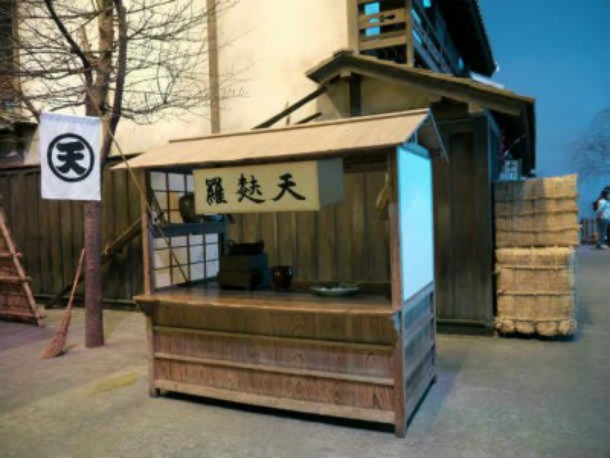 Source: randomhistory.com/sushi-facts.html, Image: Wikipedia
Source: randomhistory.com/sushi-facts.html, Image: Wikipedia Sushi rice is called sumeshi (vinegar-flavored rice) or shari. Shari literally means “Buddha’s remains,” because the very white appearance of the rice reminded people of the Buddha’s mortal remains.
 Source: randomhistory.com/sushi-facts.html, Image: Wikipedia
Source: randomhistory.com/sushi-facts.html, Image: Wikipedia About 99.9 percent of all sushi rice that is served in the United States is domestically grown.
 Source: randomhistory.com/sushi-facts.html, Image: Wikipedia
Source: randomhistory.com/sushi-facts.html, Image: Wikipedia Sushi can be prepared with either brown or white rice, and raw or cooked fish. Raw fish sliced and served alone is called sashimi, which means “pierced body.”
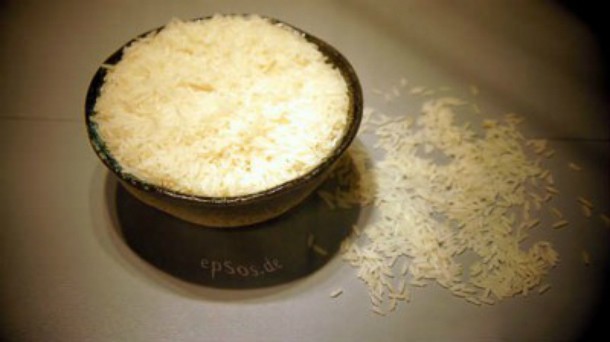 Source: randomhistory.com/sushi-facts.html, Image: commons.wikimedia.org
Source: randomhistory.com/sushi-facts.html, Image: commons.wikimedia.org The right, or to be more accurate, the traditional way to eat sushi is with your fingers, not chopsticks. However, it is appropriate to eat sashimi with chopsticks. Sushi should be eaten immediately and in one or two bites.
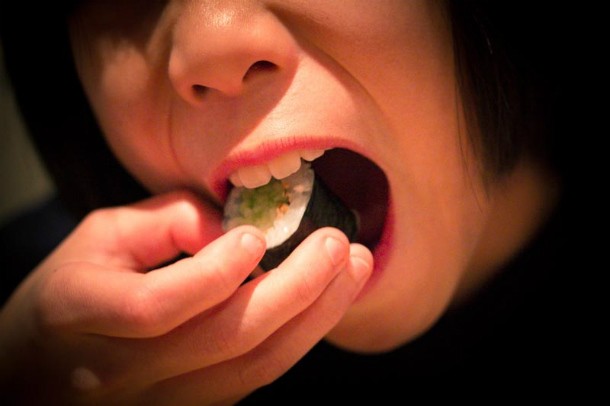 Source: randomhistory.com/sushi-facts.html, Image: Seven Depolo via Flickr
Source: randomhistory.com/sushi-facts.html, Image: Seven Depolo via Flickr There are about 3,946 sushi restaurants in the United States. Japan has about forty-five thousand. American sushi bars generate $2 billion in yearly revenue.
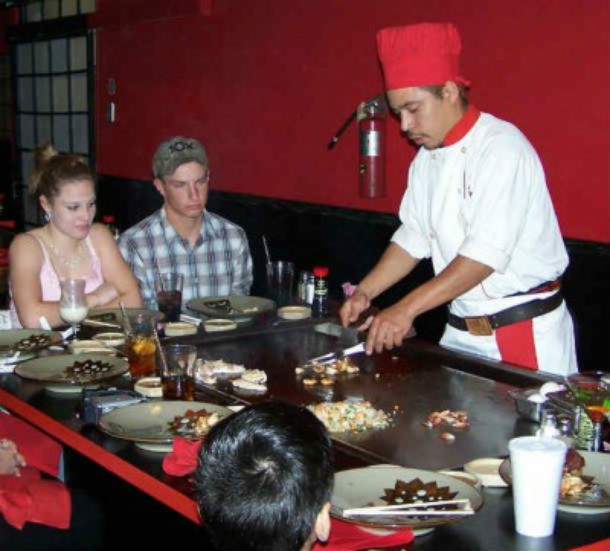 Source: randomhistory.com/sushi-facts.html, Image: Wikipedia
Source: randomhistory.com/sushi-facts.html, Image: Wikipedia As it turns out, sushi isn’t only a delicious meal, but people have also used it for art. Here are 25 Amazing Sushi Designs Too Cool To Eat.
Some diseases that can be transmitted by eating sushi include herring worm, roundworms, and other parasites. Sushi can also cause bacterial infections.
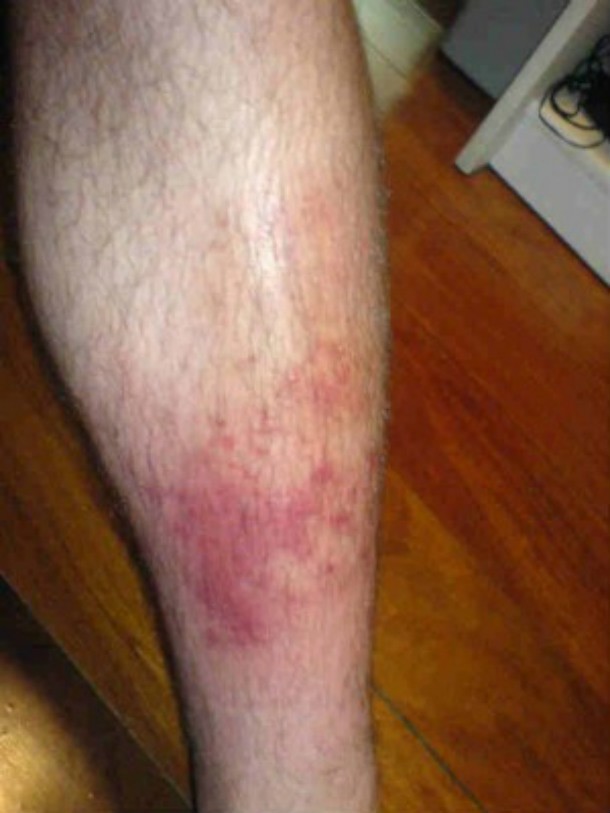 Source: randomhistory.com/sushi-facts.html, Image: Wikipedia
Source: randomhistory.com/sushi-facts.html, Image: Wikipedia Sushi is commonly thought of as an aphrodisiac because two common sushi fish, salmon and mackerel, are high in omega-3s, which are fatty acids that aid in sex-hormone production. Additionally, tuna is a source of selenium, which helps increase a male’s sperm count.
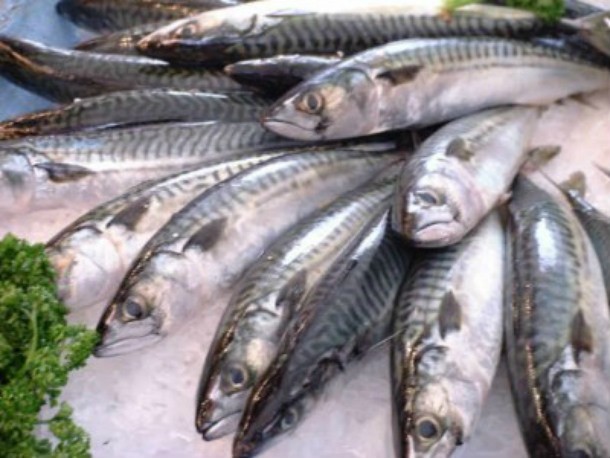 Source: randomhistory.com/sushi-facts.html, Image: Wikipedia
Source: randomhistory.com/sushi-facts.html, Image: Wikipedia Until recently, women were forbidden to be sushi chefs because it was believed that their hair oil and makeup would alter the sushi’s taste and smell. Women were also thought to have a higher body temperature, especially during menstruation. It was thought that their warm hands would spoil the cold fish.
 Source: randomhistory.com/sushi-facts.html, Image: Wikipedia
Source: randomhistory.com/sushi-facts.html, Image: Wikipedia Sushi chefs have one of the most difficult trainings of all professional chefs. They must know how to prepare raw seafood, know which fish contains harmful parasites, and know how to eliminate them. They must also know about the biochemical changes that occur after seafood is killed.
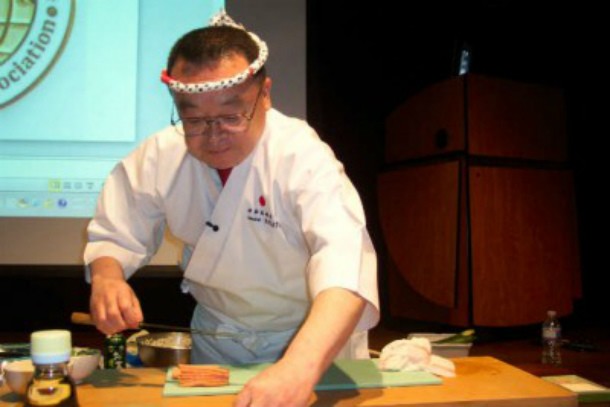 Source: randomhistory.com/sushi-facts.html, Image: Wikipedia
Source: randomhistory.com/sushi-facts.html, Image: Wikipedia The standard California roll helped make sushi popular worldwide. The California roll, or the inside-out roll, was the first American-born sushi.
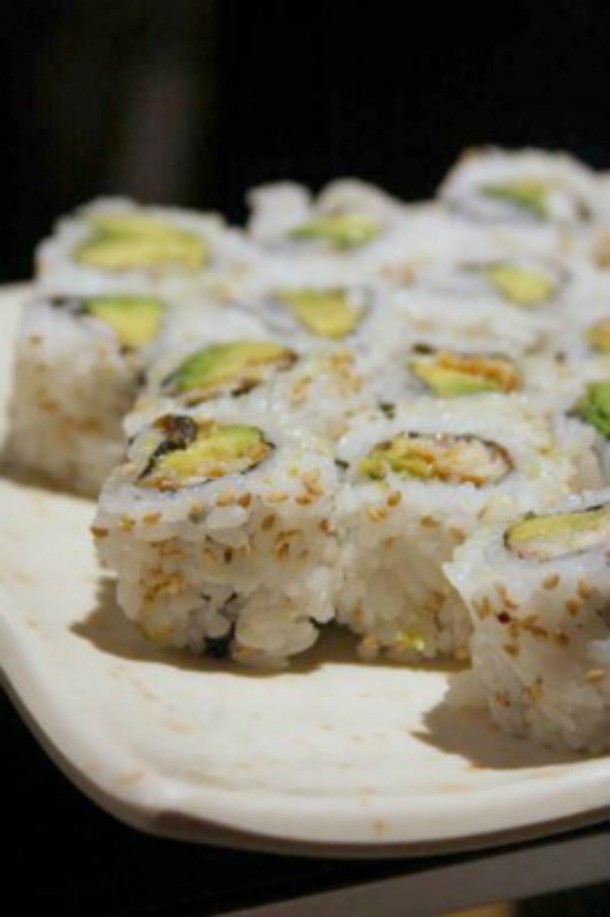 Source: randomhistory.com/sushi-facts.html, Image: commons.wikimedia.org
Source: randomhistory.com/sushi-facts.html, Image: commons.wikimedia.org Noritoshi Kanai, a Japanese native who ran a food import business in LA, opened the first American sushi bar in the early 1960's.
 Source: randomhistory.com/sushi-facts.html, Image: pixabay.com
Source: randomhistory.com/sushi-facts.html, Image: pixabay.com However, sushi became increasingly popular in the USA in the 1980's when Americans became more health conscious.
 Source: randomhistory.com/sushi-facts.html, Image: Wikipedia
Source: randomhistory.com/sushi-facts.html, Image: Wikipedia Primitive sushi making is still practiced in some rural parts of Japan. For example, funa-zushi is made from local freshwater carp, which is pickled in rice and salt for a year. The strong smell and distinctive taste is compared to mature Roquefort cheese.
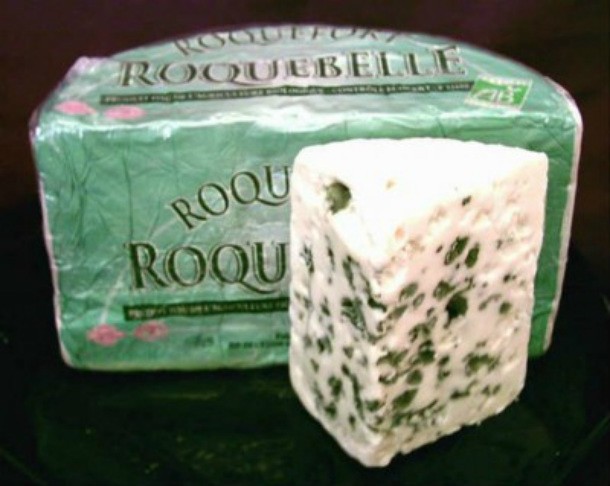 Source: randomhistory.com/sushi-facts.html, Image: commons.wikimedia.org
Source: randomhistory.com/sushi-facts.html, Image: commons.wikimedia.org The most expensive price ever paid for sushi-grade bluefin tuna was $1.8 million for 222 kilograms in Japan. The Japanese eat over eighty percent of the world’s declining tuna stock.
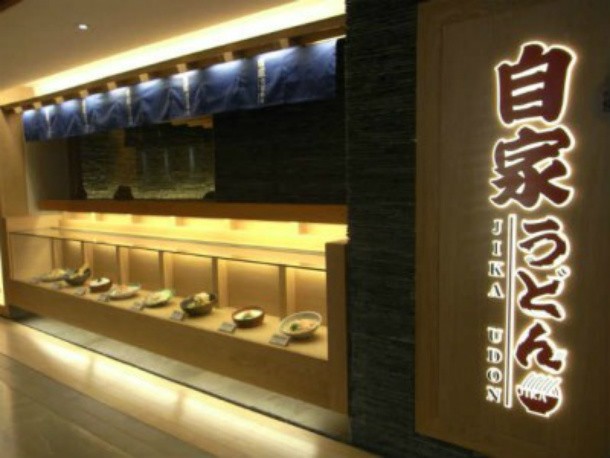 Source: randomhistory.com/sushi-facts.html, Image: commons.wikimedia.org
Source: randomhistory.com/sushi-facts.html, Image: commons.wikimedia.org Speaking of, bluefin tuna populations have dropped more than ninety-six percent due to increasing sushi demands. Most of the bluefin fishing occurs off the coast of Japan, which has few limits on tuna fishing.
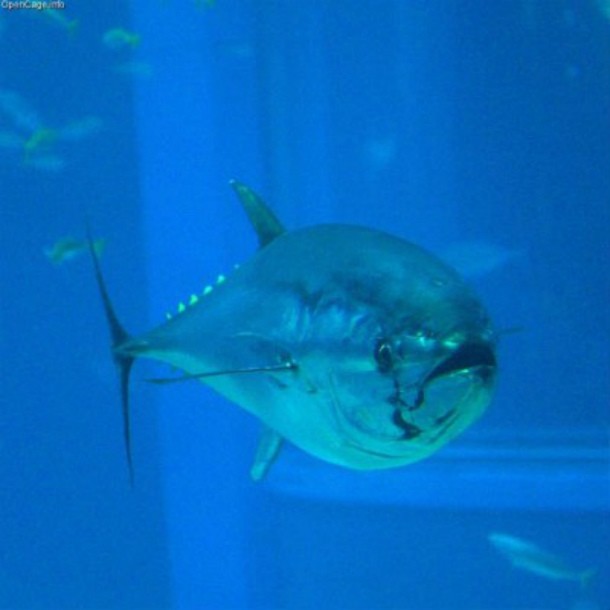 Source: randomhistory.com/sushi-facts.html, Image: YouTube
Source: randomhistory.com/sushi-facts.html, Image: YouTube According to tradition, sushi should provide a strong sense of the seasons. Consequently, many sushi chefs in Japan and America avoid out-of-season cultured fish. Fish are in season when they are tastiest and fattest, usually when they are getting ready to spawn.
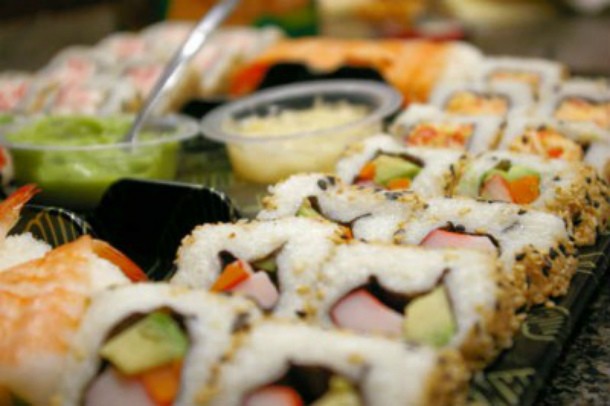 Source: randomhistory.com/sushi-facts.html, Image: Wikipedia
Source: randomhistory.com/sushi-facts.html, Image: Wikipedia Wasabi is traditionally made from the root of the wasabia japonica plant. However, most restaurant-grade wasabi is a mix of green-dyed horseradish and mustard powder.
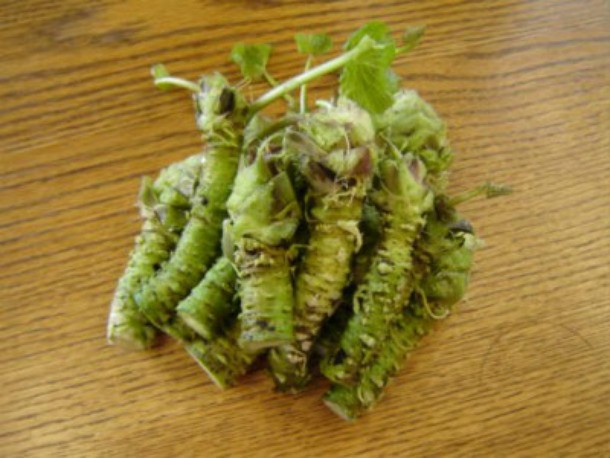 Source: randomhistory.com/sushi-facts.html, Image: commons.wikimedia.org
Source: randomhistory.com/sushi-facts.html, Image: commons.wikimedia.org While they were interned during World War II, Japanese Americans were fed potatoes and processed meat such as hot dogs or SPAM. While they disliked the potatoes, they ate the SPAM and adapted it to their food traditions, including sushi. Today, SPAM-Nori—a SPAM-based sushi—is still popular.
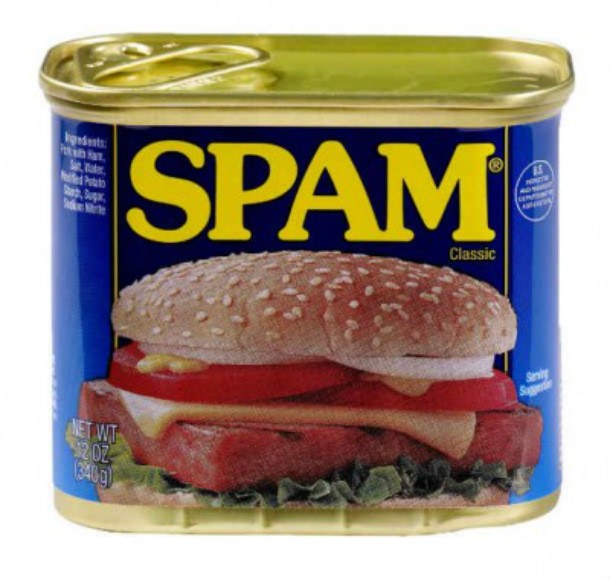 Source: randomhistory.com/sushi-facts.html, Image: Wikipedia
Source: randomhistory.com/sushi-facts.html, Image: Wikipedia Fugu is a famous type of sushi made from puffer fish. Fugu is particularly difficult to prepare because the organs of the puffer fish produce a deadly neurotoxin that is twelve hundred times more toxic than cyanide. Chefs must receive a special license to prepare it, and the president of Japan is forbidden from tasting it.
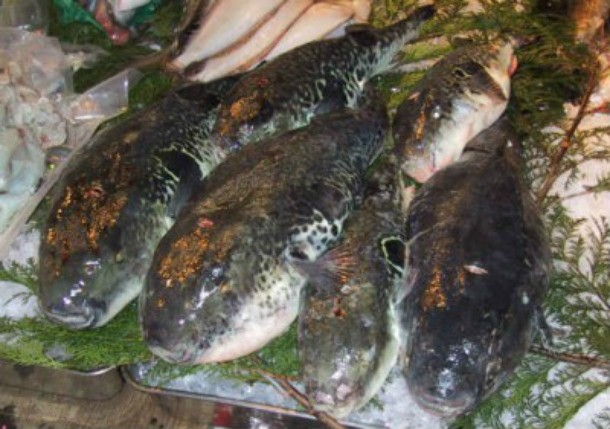 Source: randomhistory.com/sushi-facts.html, Image: Wikipedia
Source: randomhistory.com/sushi-facts.html, Image: Wikipedia Looking for more unique food creations? Here are 25 Insane Miniature Food Sculptures. (Check out #7 for mini-sushi and #2 for mini-sashimi!)



























